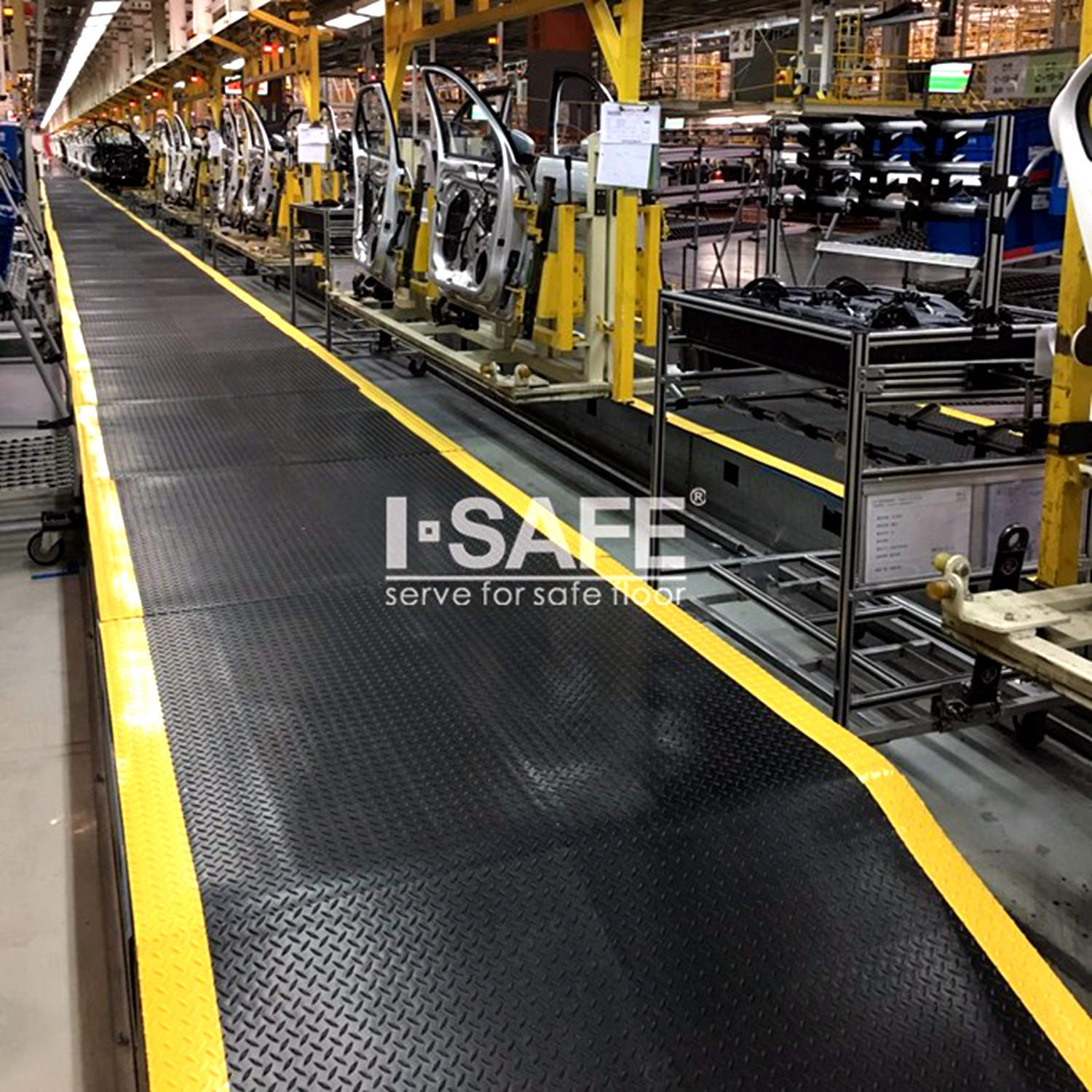- Is the thicker the industrial anti-fatigue floor mat, the better? How thick is the right thickness?
-
Issue time:2022-02-18 16:08:14 source:安珂地垫 views:2645
First clear point, industrial anti-fatigue mat absolutely can not be too thick! In 15-20mm thickness control is more safe and reliable! For the human body, industrial anti-fatigue floor mats are more suitable for the human body than hard ground (such as epoxy floor, tile or marble), which will allow people standing on it for a long time to produce comfortable leg pressure. As far as its own material is concerned, it is one of the physical properties of industrial anti-fatigue floor mat products, which belongs to the anti-fatigue property of the material.

In the physical properties of the material, according to the stress state, fatigue is divided into tensile fatigue, bending fatigue, torsional fatigue, composite fatigue, etc.. The causes of fatigue failure are mechanical fatigue, corrosion fatigue, thermal fatigue, etc. Fatigue failure caused by industrial anti-fatigue mats is usually mainly tensile fatigue, mechanical fatigue damage is more common.
Industrial anti-fatigue mats are a non-metallic composite material, usually with three layers or a combination of two layers. The surface is PVC or rubber for the steel pattern type anti-slip material, the middle layer is a polymer foam with certain buffering and strength, the bottom layer is a conductive rubber material. Industrial anti-fatigue floor mat products anti-fatigue performance mainly refers to the middle layer of polymer foam material. And thickening and thinning also means the change of the thickness of the middle layer. That is, the anti-fatigue performance of the industrial anti-fatigue floor mat product is simply to judge the fatigue resistance of the middle layer material. Its bonding strength with the table material and the bottom material, foam is a layer is enough or more than two layers stacked up, foam material itself foam density (foam pore size), hardness, tensile strength, the relationship between the material is very large. Thickness and fatigue resistance performance is also related, but also with the cushioning performance of the material. But it is not necessarily the thicker the better!
In fact, many domestic manufacturers of industrial anti-fatigue mats use intermediate layer materials of very poor quality, indiscriminately. They also tend to change the use of increasing the thickness of the middle layer in order to improve the so-called anti-fatigue properties to reduce costs. Identification is simple, cut the anti-fatigue floor mat, look at the cross-section, feel the hardness and elasticity of the middle layer, generally a few more comparisons, you can feel it. In addition to pay attention to the manufacturer's ability to customize, material certification, inspection reports, etc.!
Translated with www.DeepL.com/Translator (free version)

Current Page:Home Product Information
- Email: liming.guan@i-safe.com.cn
- Tel:+86 21 58953133/13901668040
-

Wechat:安珂工业安全地垫







